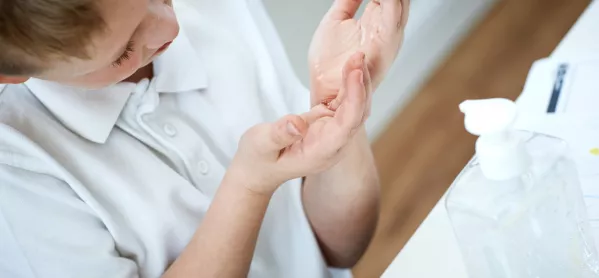- Home
- Heads welcome whole-year ‘bubble’ plan for secondaries
Heads welcome whole-year ‘bubble’ plan for secondaries

Headteachers have welcomed news that plans are set to be announced to allow schools to scrap social distancing and use “bubbles” based on whole year groups in secondary schools.
Responding to a report in the Telegraph that the government plans to scrap social distancing in schools from September, Geoff Barton, general secretary of the Association of School and College Leaders, said the plan appeared to be a “realistic and workable” way forward for reopening schools more widely.
New guidance will allow schools to expand their bubbles of 15 pupils to include a whole class, while in secondary schools a flexible approach to forming bubbles will be taken, which may include a whole year group, it was reported.
Distancing: ‘Does the DfE understand how schools work?’
Related: ‘It’s a fantasy to see 1m rule as the key to full school return’
Williamson: ‘Bubble size may expand to take full class’
Mr Barton said: “This plan appears to us to be the beginning of a realistic and workable way forward to bringing all children back into school in September.
“Social distancing at either 2m or 1m was never going to be possible with a full return to school, and it recognises that safety will have to be managed in other ways.
Coronavirus: ‘A more workable way forward for opening schools’
“It also recognises that ‘bubbles’ in primaries and secondaries would need to look different. In secondaries, children have to regularly move between different subject options, so the idea of ‘bubbles’ being based on whole year groups is a more workable way forward.”
It is understood that the bubbles of pupils would spend break and lunch times together, and could also travel to and from school together as a group.
Pupils will continue to be encouraged to wash their hands regularly and schools will also still need to carry out enhanced cleaning to prevent the spread of the coronavirus. Earlier this week, Mr Barton questioned whether the Department for Education understood how schools worked at secondary level after the prime minister promised all pupils would go back to school in September. He pointed out that secondary pupils were taught by “myriad different teachers”.
Today Mr Barton said: “All of this is an evolving discussion, and we will be seeking and feeding back the views of our members to the government. We will need also to see how the concept of ‘bubbles’ would apply to further education and sixth-form colleges.
“We will want to understand the public health guidance which underpins the approach to full reopening. This is important for the confidence of parents, pupils and staff. And, as none of us know what the coronavirus situation will look like in September, we think it would be sensible to have a plan B if the conditions do not allow for a full reopening.
“This is not a case of us being negative, but merely a pragmatic suggestion given the uncertainty that lies ahead. Our members will also need a clear and precise set of detailed guidance which they can implement.
“We would also caution that a full return in September will not be school or college as normal. There will be a raft of safety measures in place, and we all need to prepare ourselves for the likelihood that there may be localised full or partial closures if there are outbreaks of the coronavirus, and this may be the reality for some time to come.”
NASUWT union general secretary Dr Patrick Roach said: “The NASUWT wants to see schools open to all children as soon as it is safe to do so.
“However, we remain concerned that the government continues to set arbitrary dates for the return of pupils to schools, without providing the necessary evidence that its plans will not undermine public health or the health and safety of children, young people and staff in schools.
“Ministers have yet to demonstrate how their plans to increase the size of classroom ‘bubbles’ will ensure the health and safety of pupils and staff or provide a basis for effective teaching and learning to take place.”
“Schools and colleges are also workplaces and the government must take seriously the concerns of teachers, who must be assured that their health and safety is not being put at risk.”
Keep reading for just £1 per month
You've reached your limit of free articles this month. Subscribe for £1 per month for three months and get:
- Unlimited access to all Tes magazine content
- Exclusive subscriber-only stories
- Award-winning email newsletters



